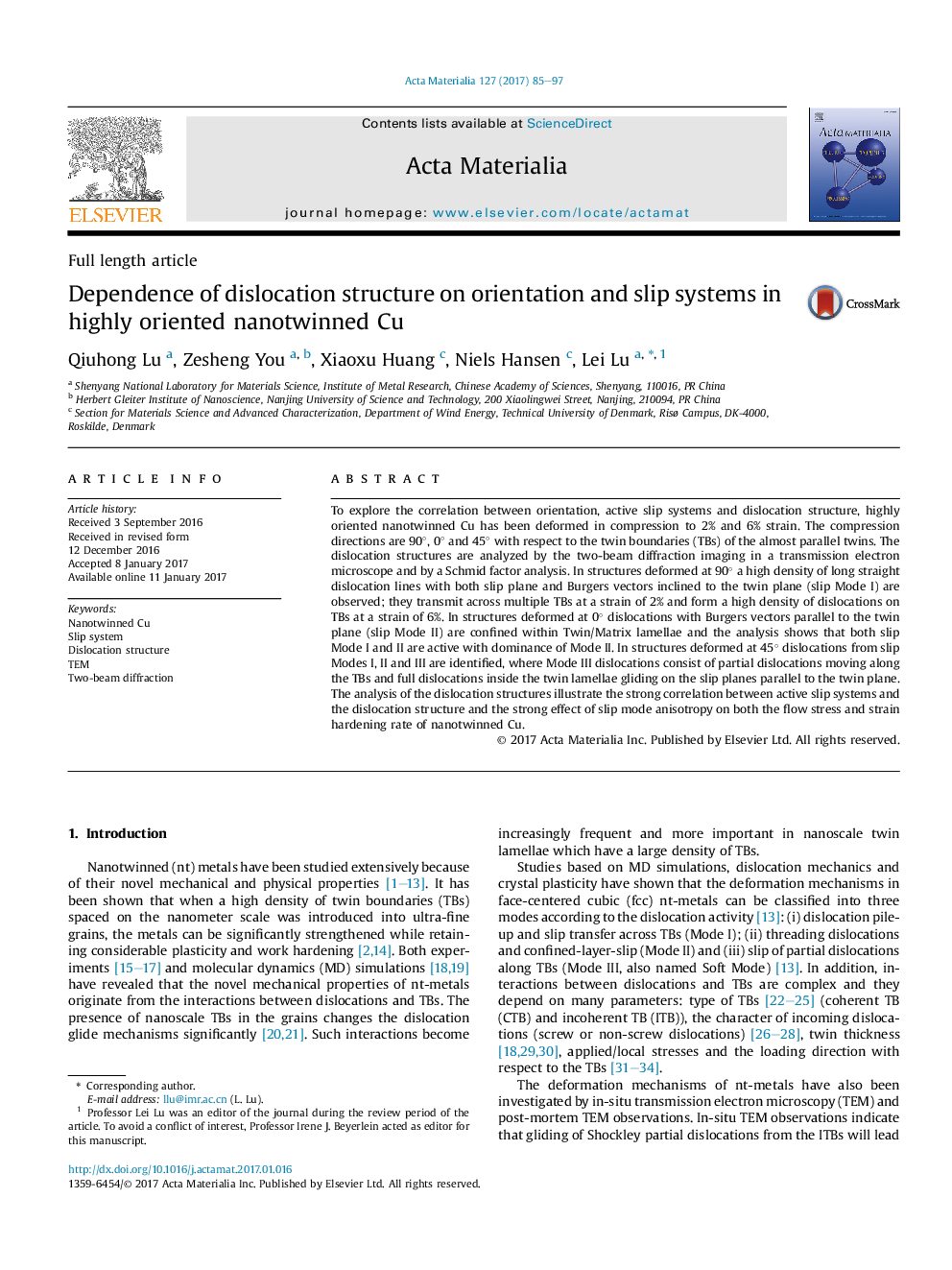| Article ID | Journal | Published Year | Pages | File Type |
|---|---|---|---|---|
| 5436312 | Acta Materialia | 2017 | 13 Pages |
To explore the correlation between orientation, active slip systems and dislocation structure, highly oriented nanotwinned Cu has been deformed in compression to 2% and 6% strain. The compression directions are 90°, 0° and 45° with respect to the twin boundaries (TBs) of the almost parallel twins. The dislocation structures are analyzed by the two-beam diffraction imaging in a transmission electron microscope and by a Schmid factor analysis. In structures deformed at 90° a high density of long straight dislocation lines with both slip plane and Burgers vectors inclined to the twin plane (slip Mode I) are observed; they transmit across multiple TBs at a strain of 2% and form a high density of dislocations on TBs at a strain of 6%. In structures deformed at 0° dislocations with Burgers vectors parallel to the twin plane (slip Mode II) are confined within Twin/Matrix lamellae and the analysis shows that both slip Mode I and II are active with dominance of Mode II. In structures deformed at 45° dislocations from slip Modes I, II and III are identified, where Mode III dislocations consist of partial dislocations moving along the TBs and full dislocations inside the twin lamellae gliding on the slip planes parallel to the twin plane. The analysis of the dislocation structures illustrate the strong correlation between active slip systems and the dislocation structure and the strong effect of slip mode anisotropy on both the flow stress and strain hardening rate of nanotwinned Cu.
Graphical abstractDownload high-res image (335KB)Download full-size image
